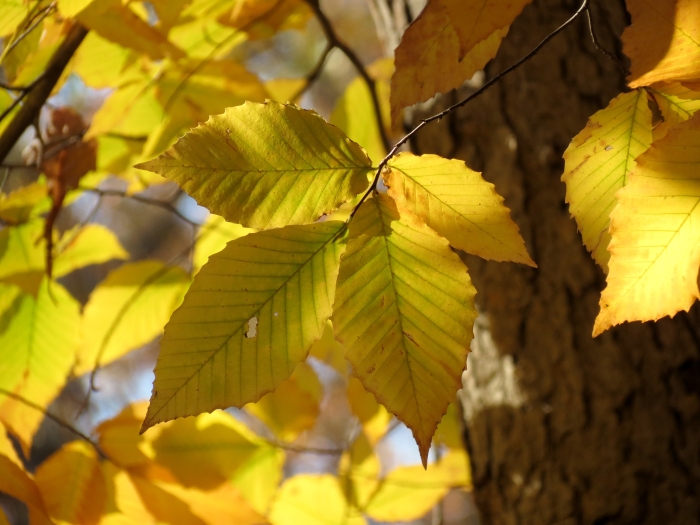American Beech
(Fagus grandifolia)
American Beech (Fagus grandifolia)
/
/

Katja Schulz
CC BY 4.0




















































































Estimated Native Range
Summary
The American Beech is valued for its stately form, smooth bark, and vibrant fall foliage. It is used in large landscape plantings, such as parks and spacious gardens. It can be difficult to transplant due to its deep root system but is otherwise low-maintenance once established. The tree prefers full sun to part shade and medium water, with a preference for well-drained soils. It is not drought-tolerant and may suffer from beech bark disease, caused by a combination of a scale insect and a fungus. Beech nuts are an important food source for wildlife, but the tree can also reproduce vegetatively through root sprouts, which can lead to dense thickets if not managed.CC BY-SA 4.0
Plant Description
- Plant Type: Tree
- Height: 60-80 feet
- Width: 40-80 feet
- Growth Rate: Slow
- Flower Color: N/A
- Flowering Season: Spring
- Leaf Retention: Deciduous
Growth Requirements
- Sun: Full Sun, Part Shade
- Water: Medium
- Drainage: Fast, Medium
Common Uses
Bee Garden, Bird Garden, Border Plant, Butterfly Garden, Deer Resistant, Edible*Disclaimer: Easyscape's listed plant edibility is for informational use. Always verify the safety and proper identification of any plant before consumption., Hummingbird Garden, Rabbit Resistant, Salt Tolerant
Natural Habitat
Mature deciduous forests in the Eastern United States and southeastern Canada, in deep, rich, well-drained soils with consistent moisture
Other Names
Common Names: North American Beech, Hêtre Américain, Hêtre D’Amérique, Hêtre À Grandes Feuilles, Amerikansk Bok
Scientific Names: , Fagus grandifolia, Fagus grandifolia var. grandifolia, Fagus ferruginea, Fagus grandifolia subsp. heterophylla, Fagus grandifolia f. grandifolia, Fagus grandifolia var. typica,
GBIF Accepted Name: Fagus grandifolia Ehrh.